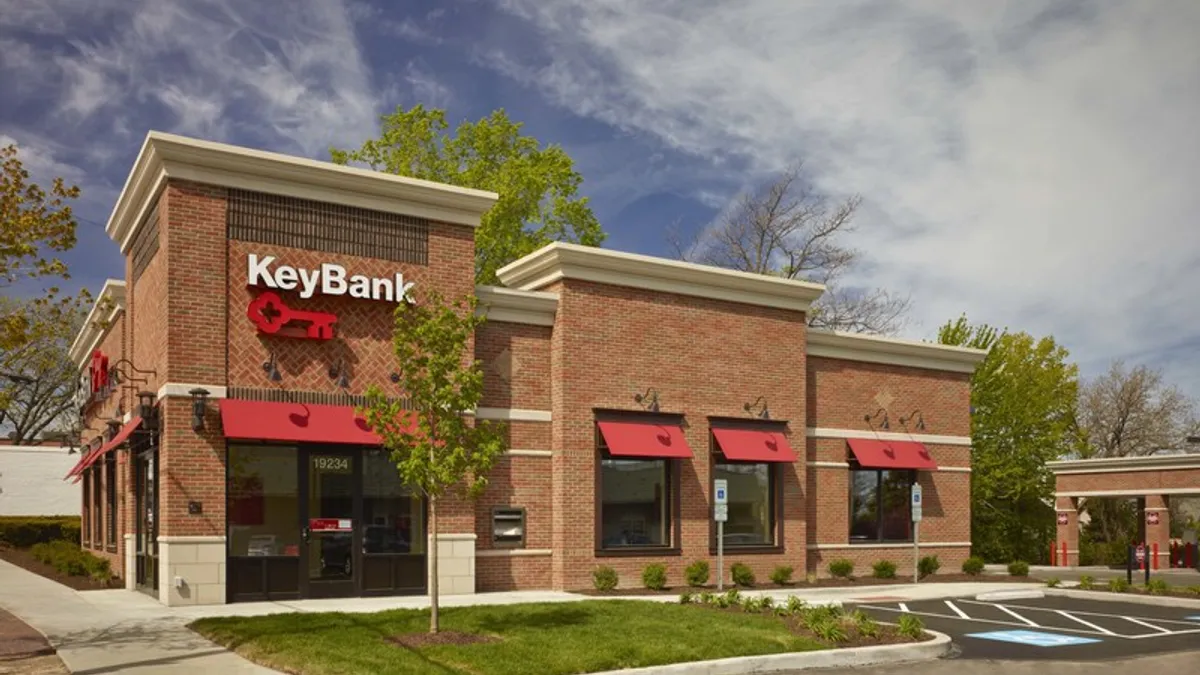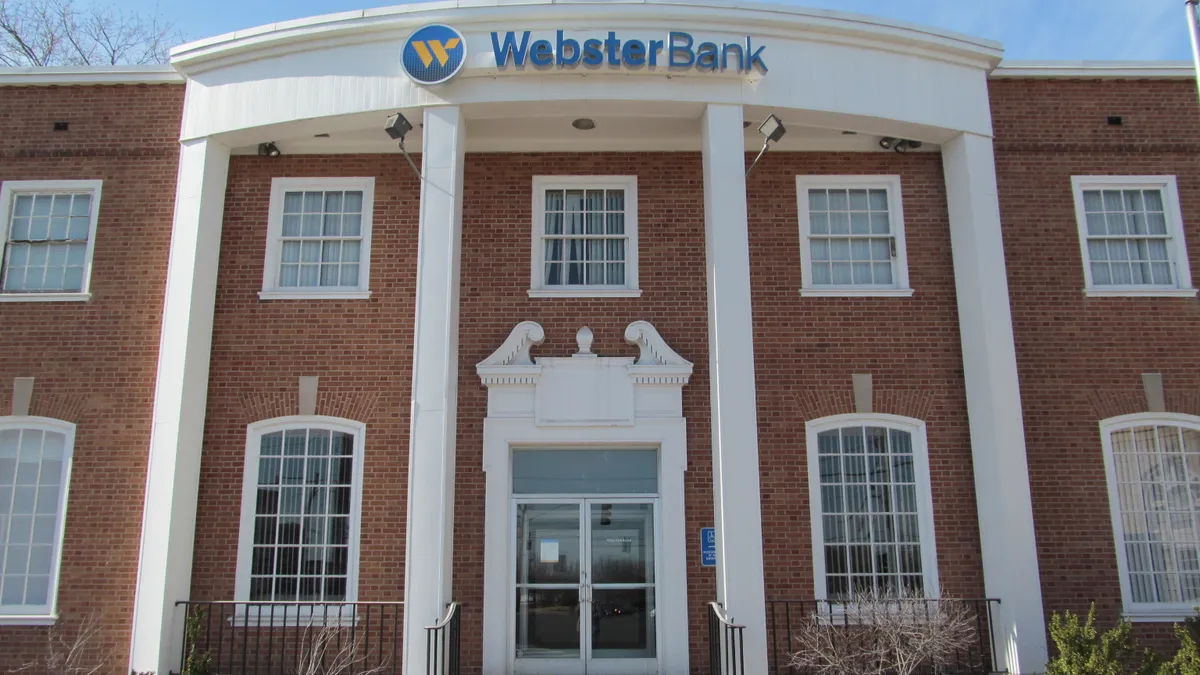Like many financial institutions, KeyBank's digital focus was present long before the coronavirus pandemic forced many banks to interact with customers through digital-only channels.
Jamie Warder, executive vice president and head of digital banking at the Cleveland-based bank, said KeyBank has spent the past decade strategizing how it can digitize its products to provide remote self-service capabilities for its clients while maintaining in-person options.
As the pandemic ushered in social distancing and widespread changes in customer behavior, Warder said the $156 billion-asset regional bank began to question the speed of its existing digital strategy.
"Do we need to speed up even more, because there's a very real shift in behavior that's happened over the last couple months," Warder said. "[The pandemic] had us thinking, 'Do we need to go faster, harder and stronger at our digital strategy?' But the good news is, we've been at this for a while, driven by non-pandemic-related things."
Warder talked to Banking Dive about KeyBank's emphasis on combining self-service with a personal touch, its branch strategy and the importance of customer choice.
This interview has been edited for clarity and brevity.
BANKING DIVE: How has the pandemic changed customer behaviors?
JAMIE WARDER: I think the pandemic has created a step change. That said, I do think we'll see a peak and then some backing off.
They're already seeing that there was a huge peak in telemedicine because everybody had to go to the doctor that way for a while. And now that some of the restrictions are being lifted, there's certainly an increase in telemedicine, but it's not at the peak levels. I actually think that's the way it will be in banking. I think there's a whole set of banking customers who tried new digital capabilities, originating accounts or servicing accounts in various ways, for the first time during the pandemic. They like it, it's easy, it's fast, it's frictionless, and I think they will come back. I do think there's a set of clients out there who would prefer other methods, but were forced to engage digitally.
We've seen a peak and we're seeing a little bit of drop-off, but not a drop-off to pre-pandemic. And that's across most measures.
What are some areas in the banking industry that are ripe for digital enhancements?
WARDER: Digital servicing in banking is probably the most mature right now. You interact with your accounts once you're depositing checks and transferring funds and paying bills. That's very mature. For a client who says, "I'm a middle-market company, and I want to open a loan," being able to do that digitally is less mature on the servicing side.
Another place that's even less mature is advice and insights that normally a good banker or adviser could give. But we're seeing that in the space of origination — in the space of advice, guidance and planning — that there's a very real digital play, and I think that's where we might see some additional push.
What is KeyBank's strategy when it comes to mixing digital self-service capabilities with the personal touch that some customers want?
WARDER: We fundamentally believe in, "Let the client choose."
We have a mortgage capability that allows you to do your mortgage at home without talking to anybody. We've been working on that capability and we do a residential mortgage digitally, end to end. But on that same exact system, you could get started and then come talk to a loan officer or walk into the branch. You could upload documents or they could upload them for you. Signatures can be sent either by the bank or you can do it on your own. So that's one example of how a self service or a system service can both be very digital.
"We fundamentally believe in, 'Let the client choose.'"

Jamie Warder
Head of Digital Banking, KeyBank
Another example is in the advice space. We have some proprietary capabilities where, when a banker is having a conversation with a small business or a consumer, they'll go through a shared digital experience — side-by-side touch screens, answering questions, wider bars to gather information together — and then the banker can use that information to make recommendations.
We also have algorithms figuring out, what do we know about the client? What do we know about other clients that look like that client so we can supplement the advice with digital advice, too? By giving our bankers the digital capabilities, we're making that more bionic.
How prepared was KeyBank when it came to servicing Paycheck Protection Program (PPP) clients?
WARDER: This is an area where we have the capabilities internally, and a small-business lending application digitally. We had a brand-new lending origination system and thousands of small-business and larger-business relationship managers across the country.
The PPP program came together very quickly. I was very proud of Key being able to assemble those things — not just the digital components but also our people — and get them organized around this. We've been able to fund over 40,000 loans.
We punched way above our weight, given our size. And we were able to help those clients in a remote and digital way. I think what made it powerful for Key was just being able to mix the digital capabilities with a lot of advice and support that the clients wanted during this very difficult time.
"We've been able to fund over 40,000 [PPP] loans. We punched way above our weight, given our size."

Jamie Warder
Head of Digital Banking, KeyBank
What is KeyBank's branch strategy?
WARDER: We look at this all the time and, over the last couple years, we have contracted our branch network. We produce branches where we think we can still serve the customer, but we think the real opportunity is inside the branch. There is an opportunity for us to move away from more transactional work and things that digital can handle very smartly, and that frees up and liberates our terrific colleagues to spend time on things like advice, insights and financial wellness — those higher value-add things.
What are some new products or services we can expect to see from KeyBank?
WARDER: We think we have some unique capabilities around healthcare, and we think by mixing our people and expert and advice capabilities around health care, we think that's one way that we can innovate in the future.
I think you'll also see us continue to push digitally, and digitally defined by self service, assisted bionic service for our sales and service team. You'll see a lot more of that.
We have a very thriving focus around fintechs — partnering, funding and acquiring fintechs. We've done all three of those things. You'll see us continue to do that because we think, by doing that, we can create better outcomes for our shareholders and for our clients.






















